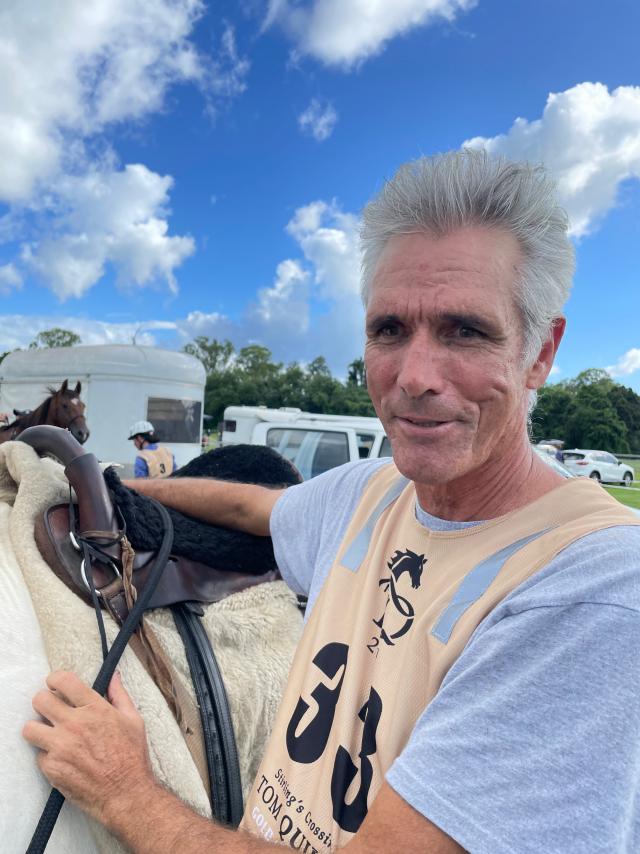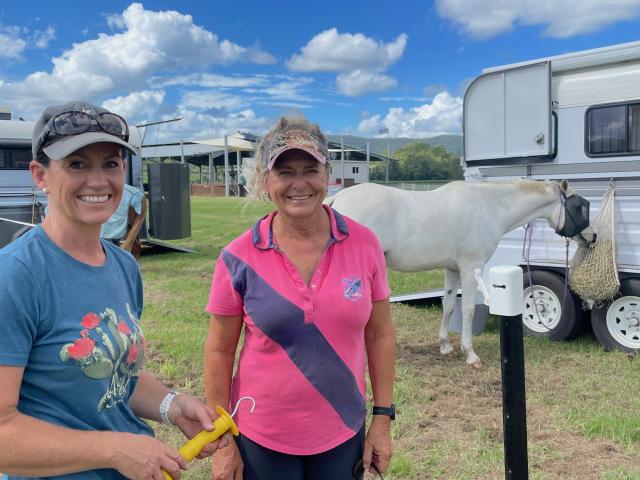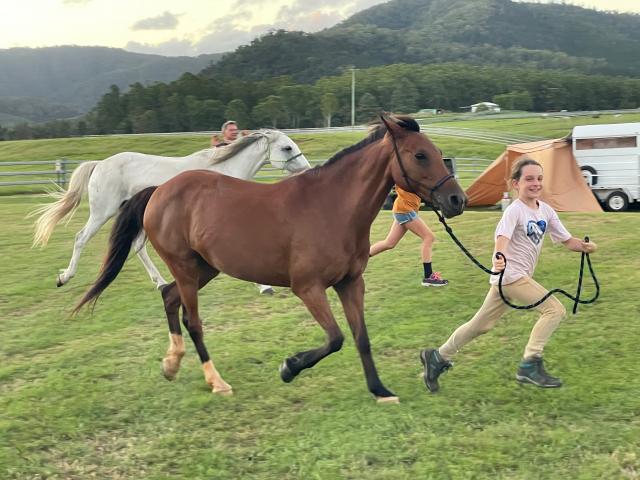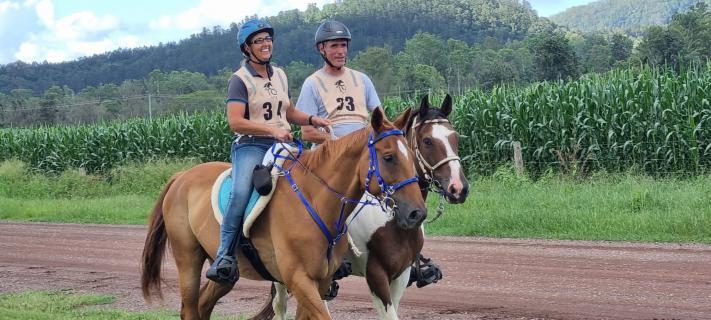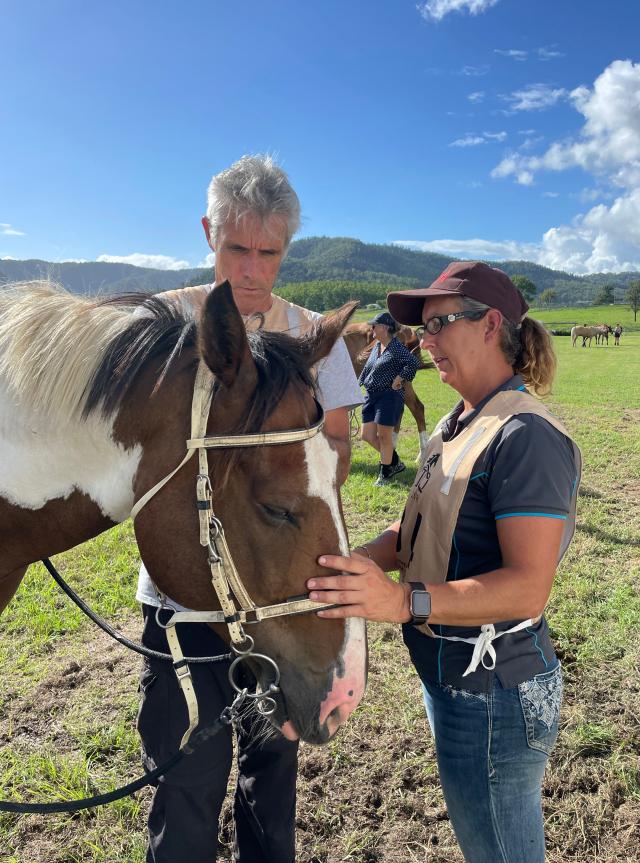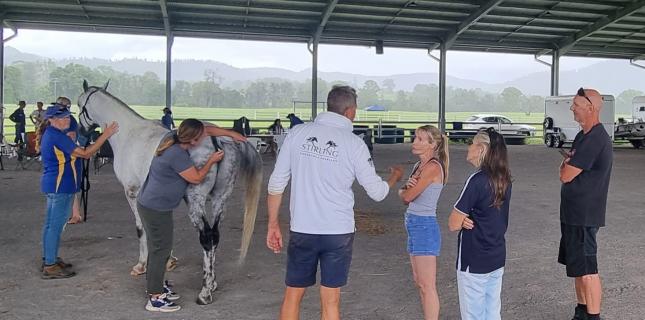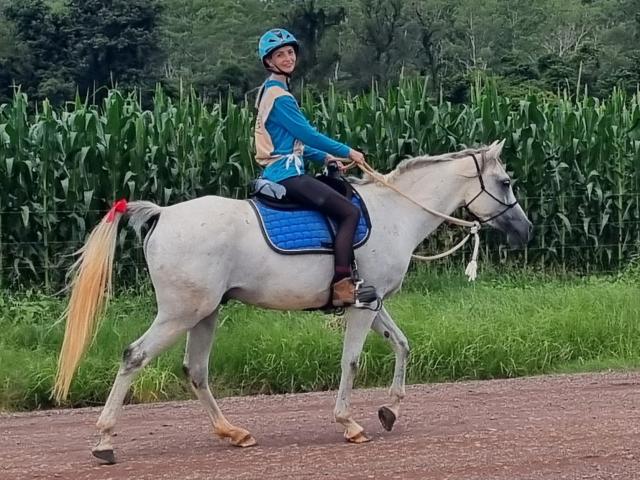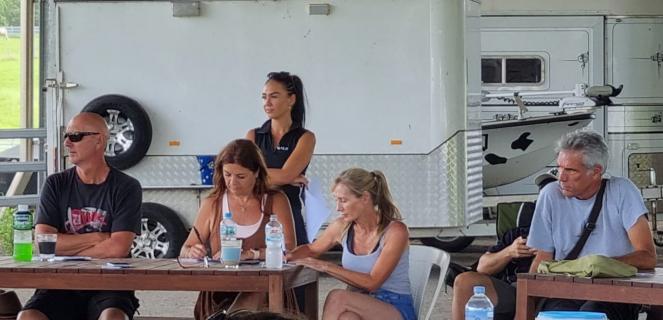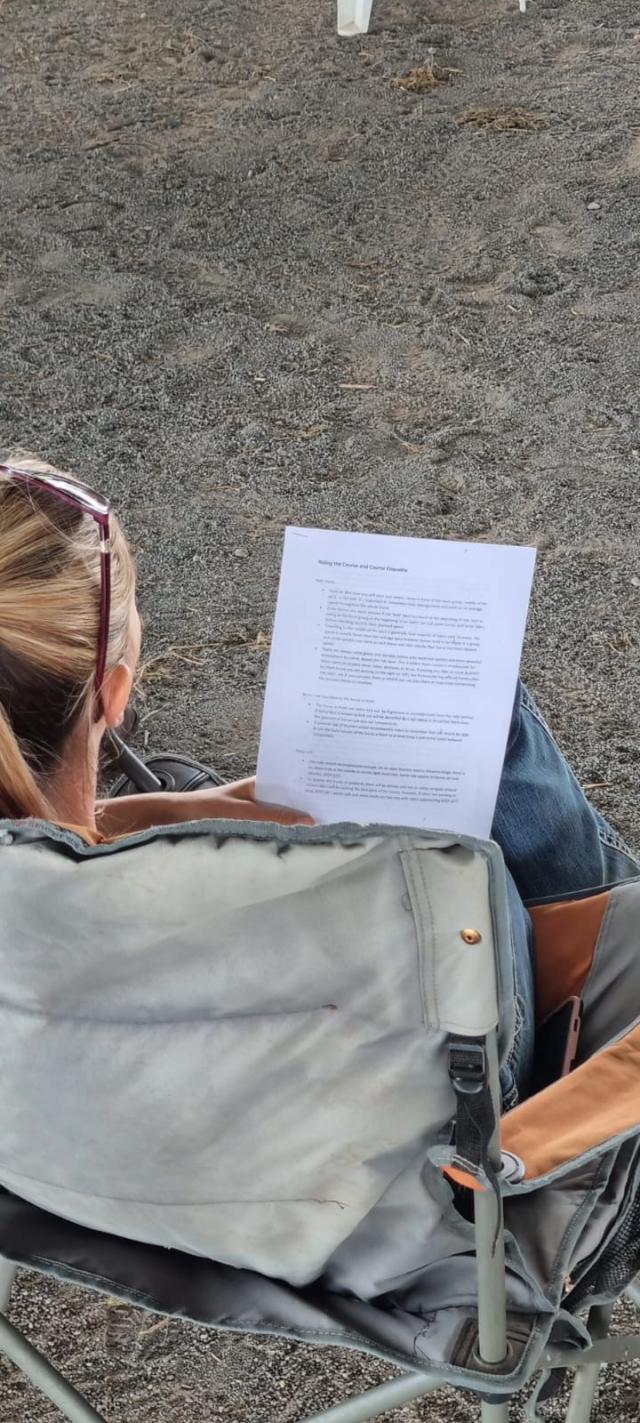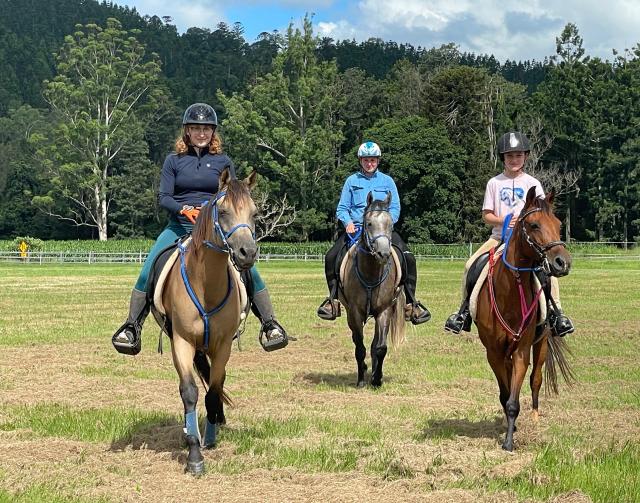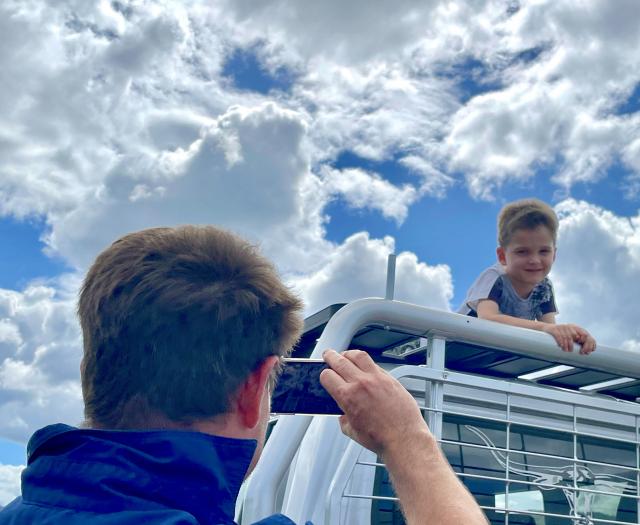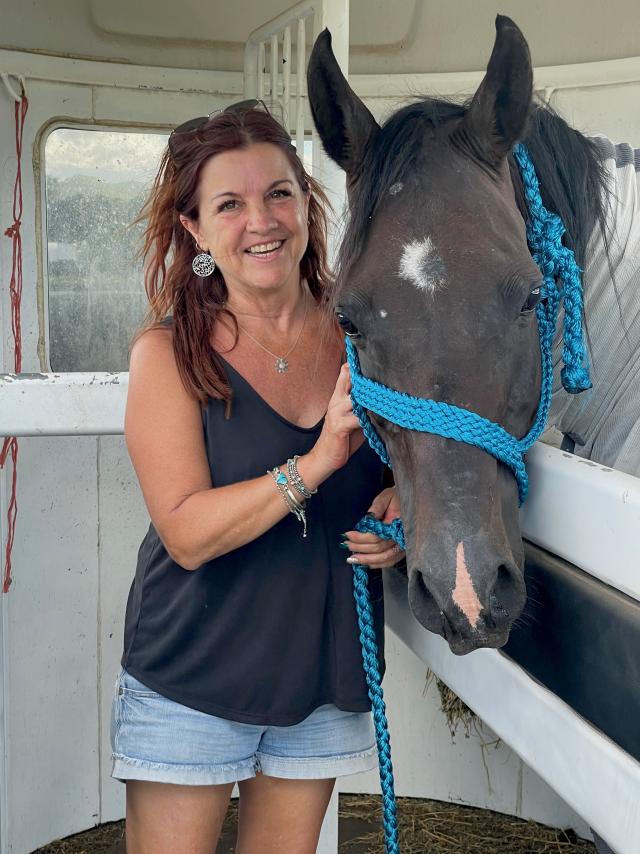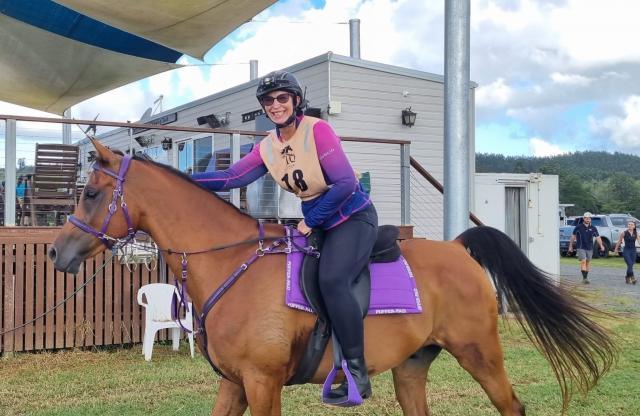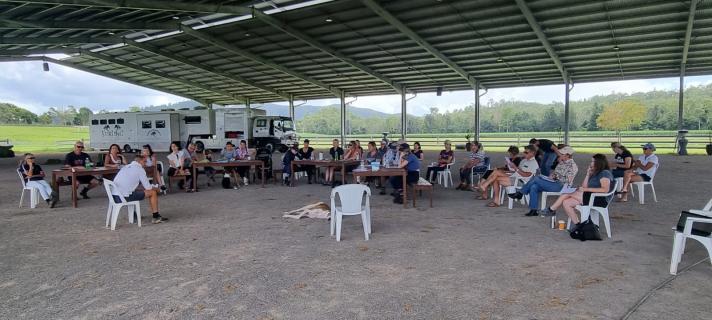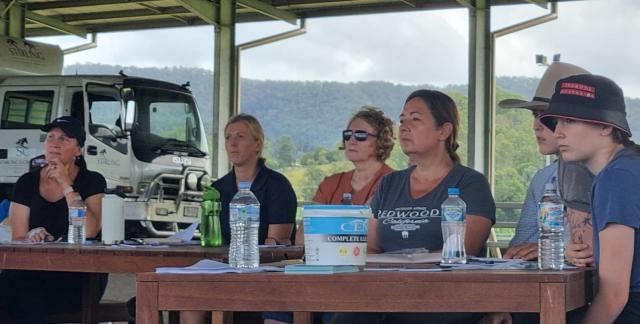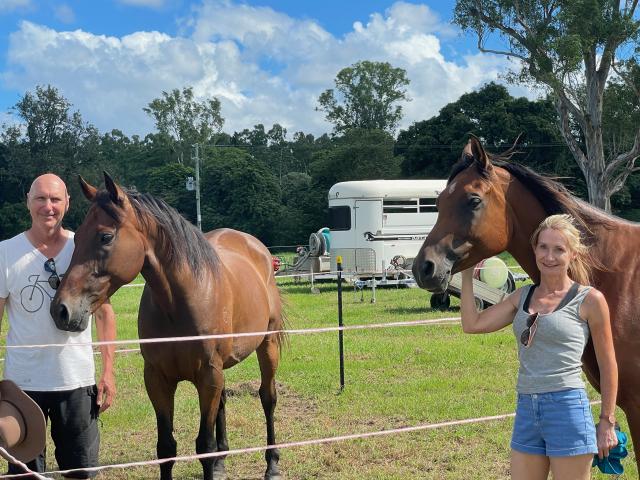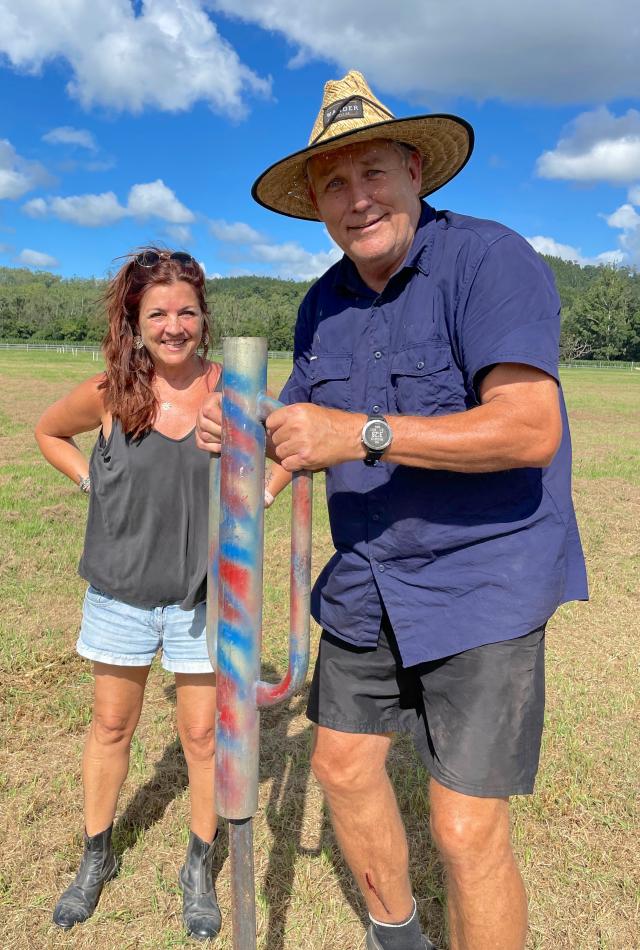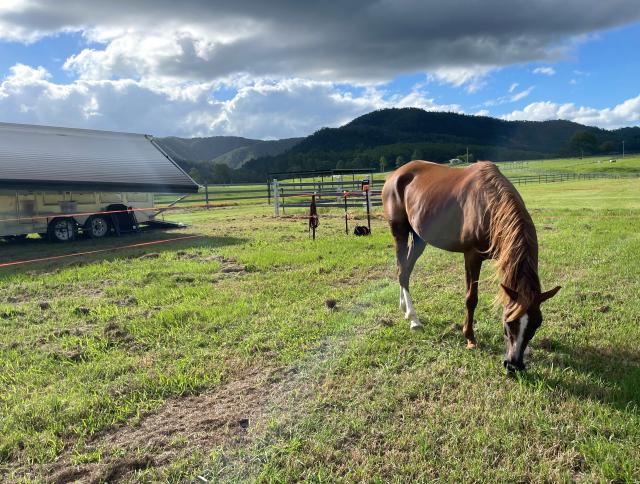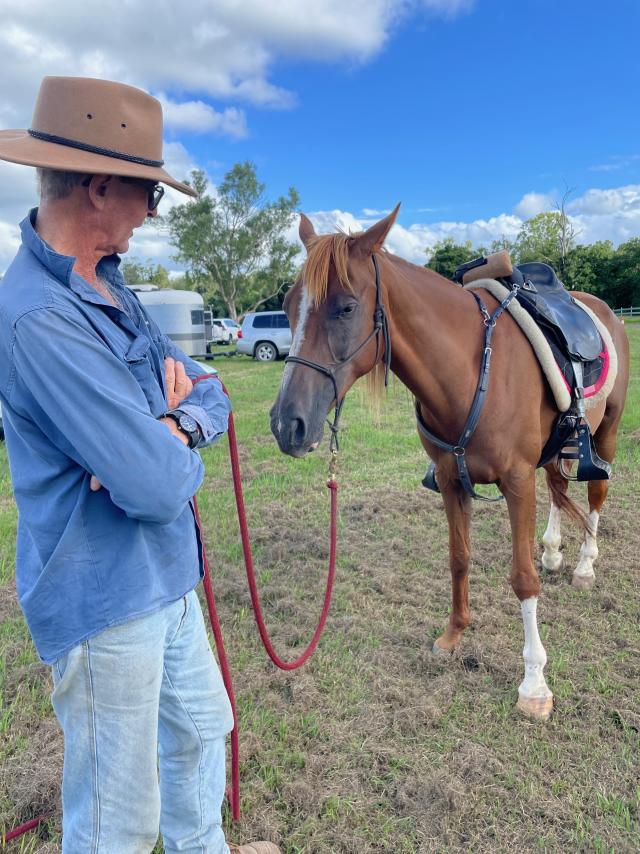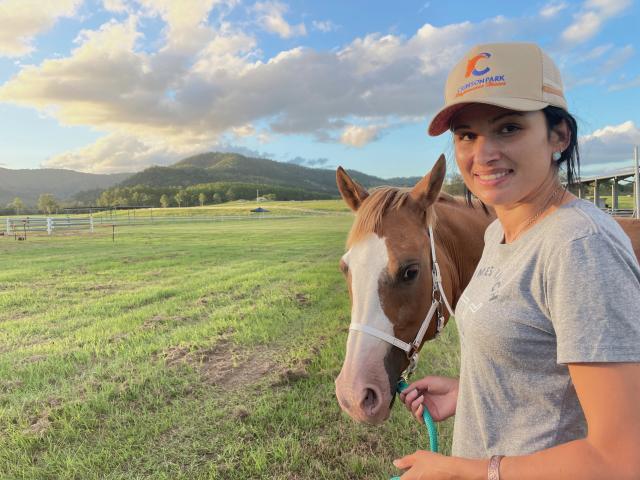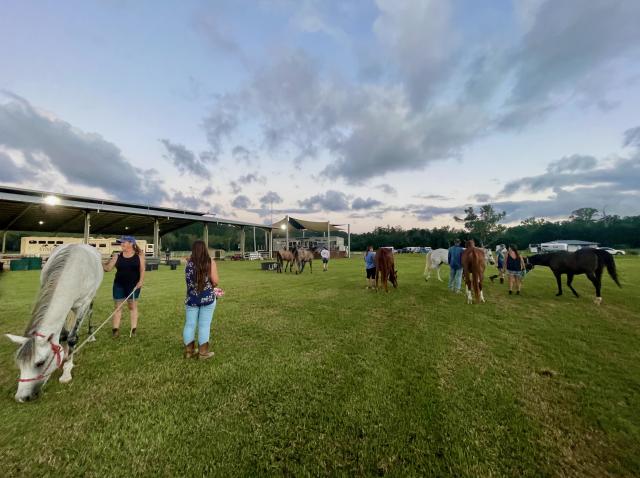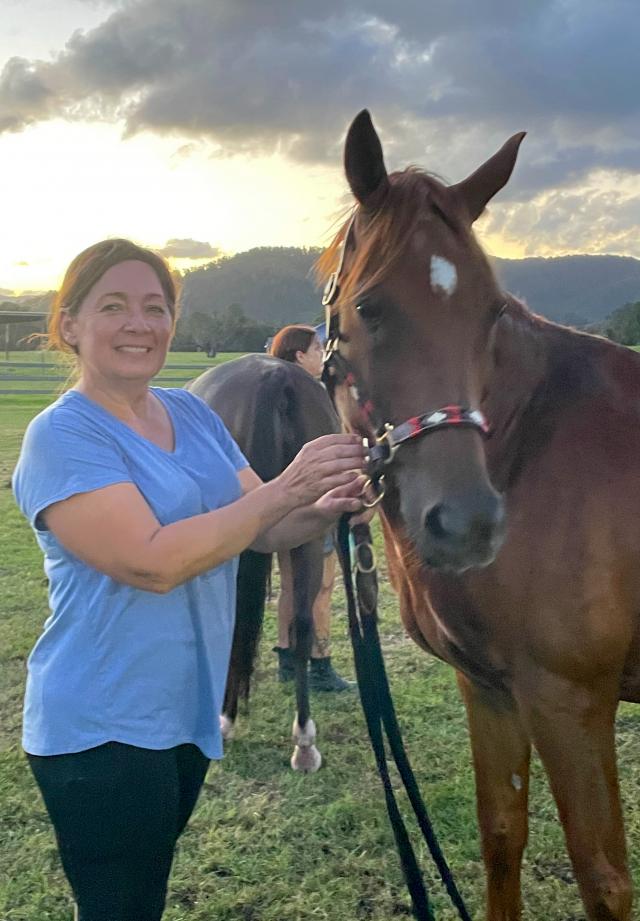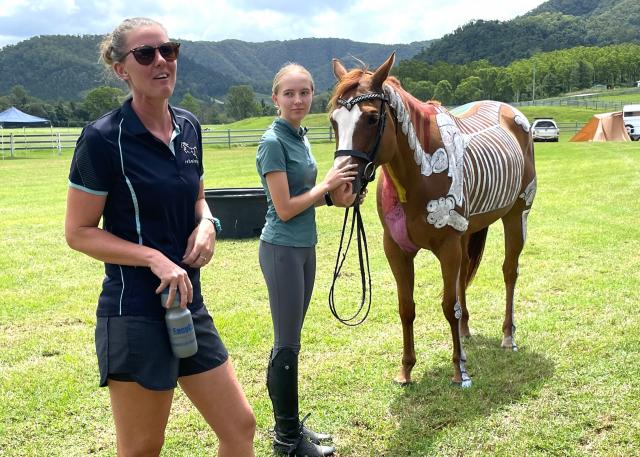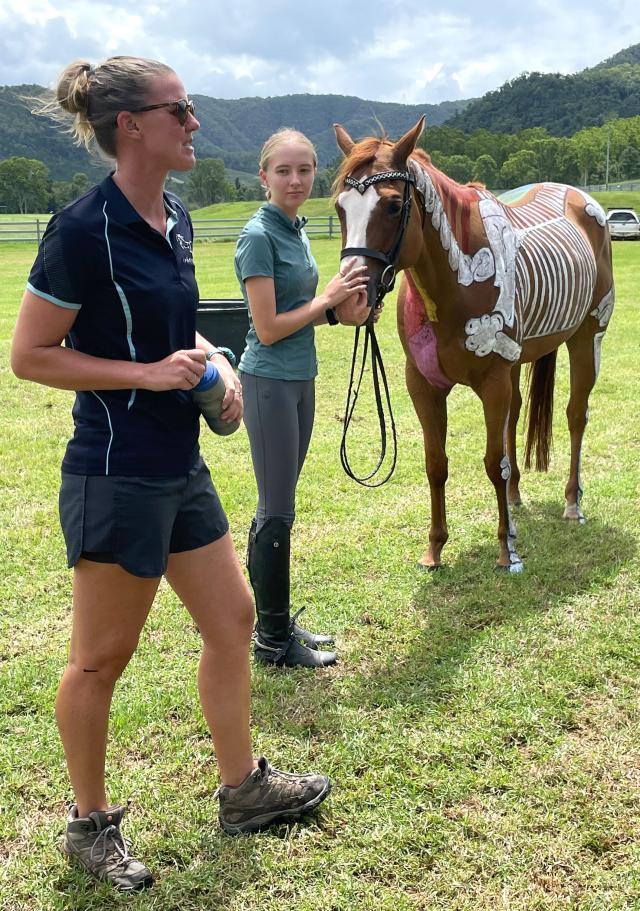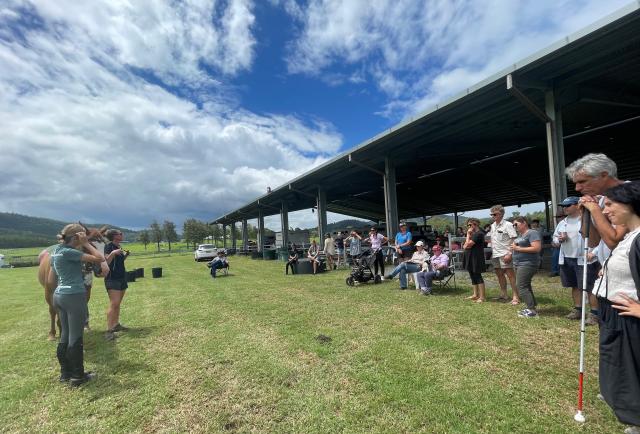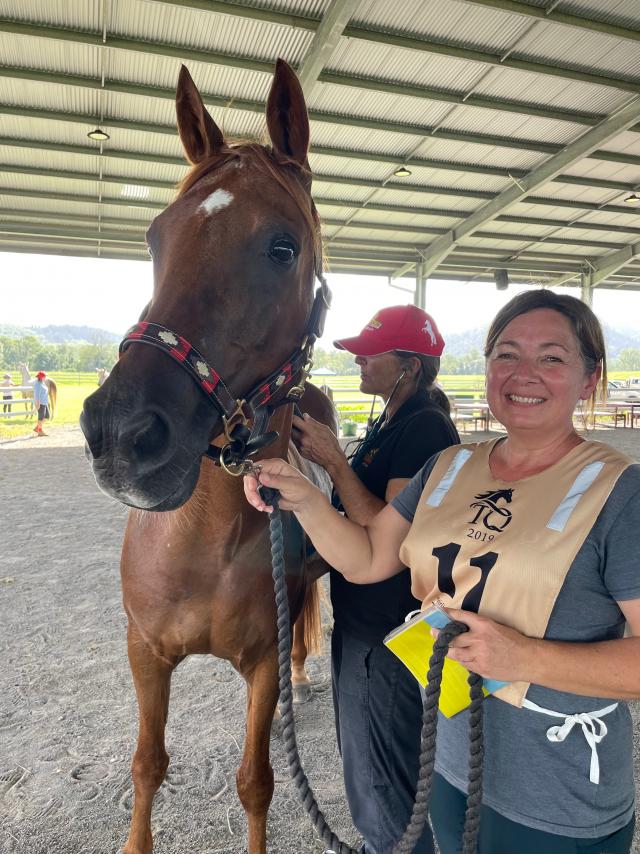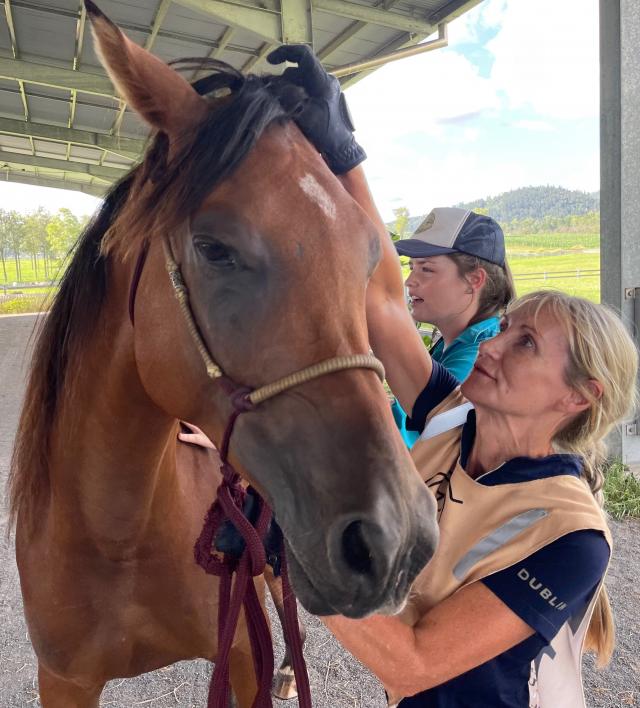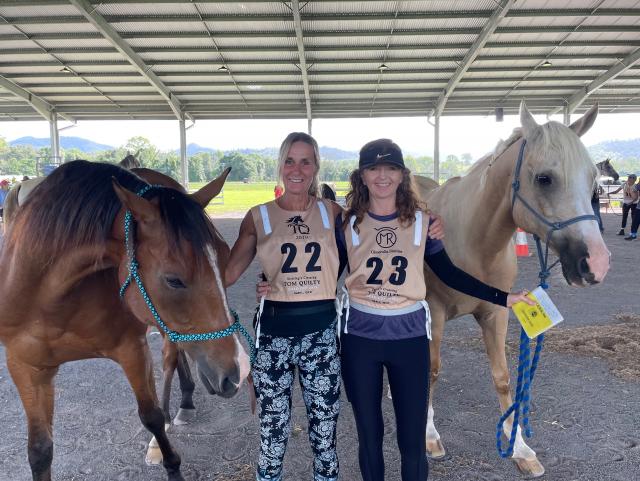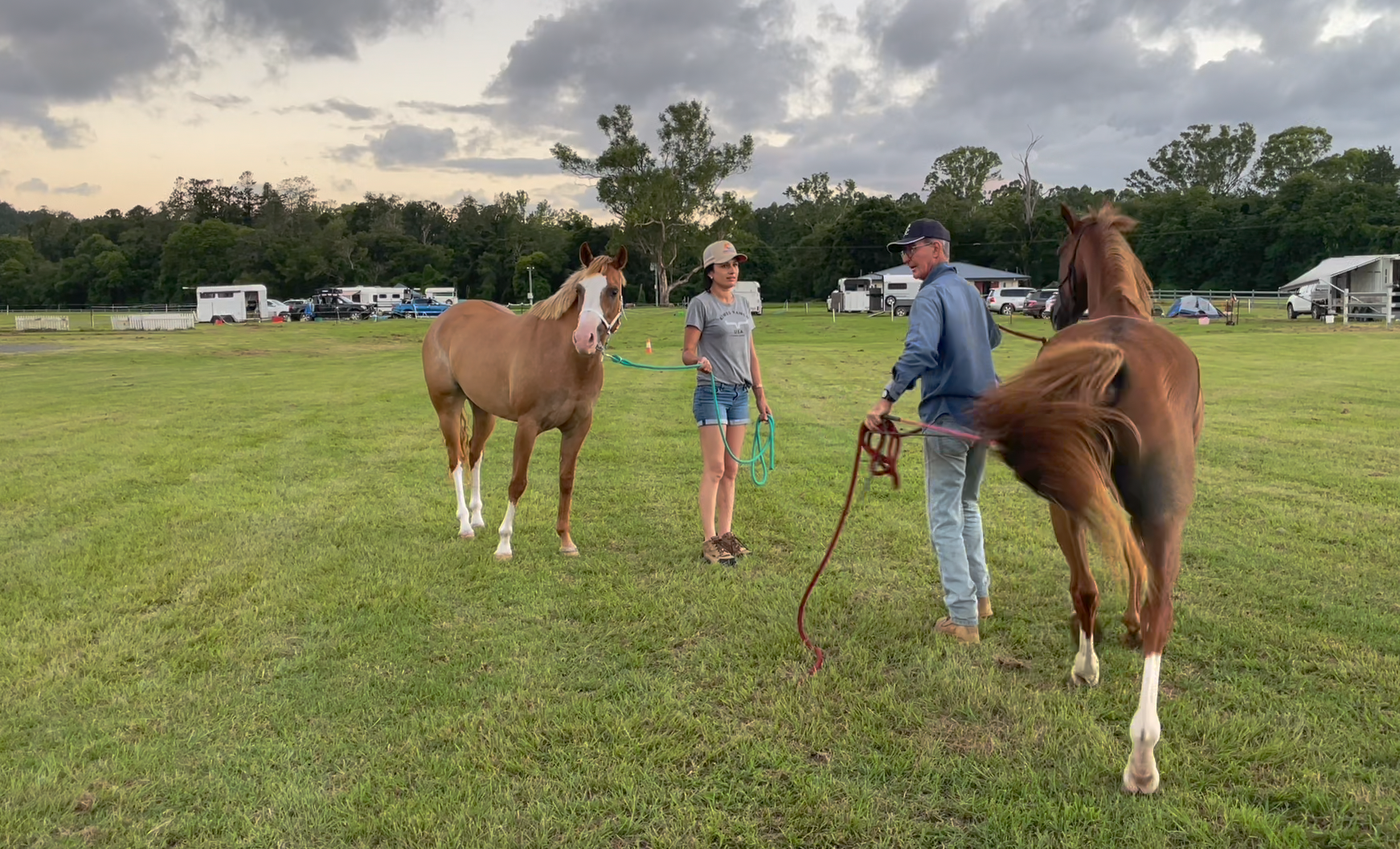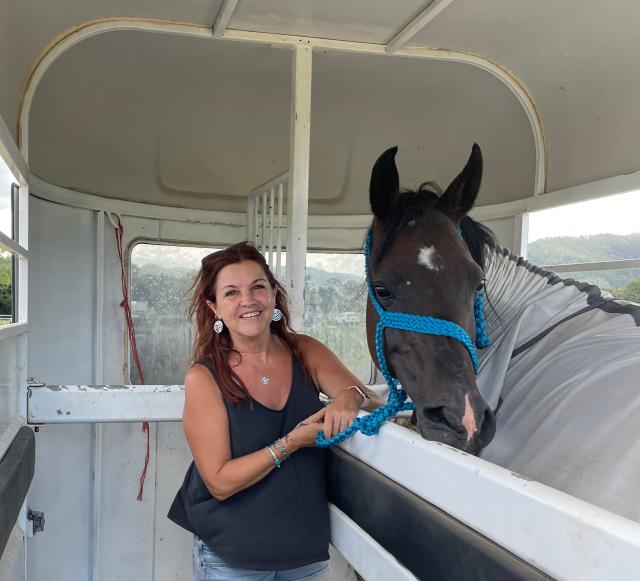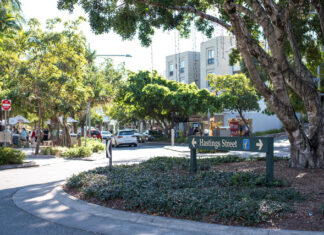PRECEDE
Lessons were learned in the second Mary Valley endurance riding education weekend, as ERLE LEVEY discovers.
BREAKOUT QUOTE
“It gives you freedom. I jump out of aeroplanes, I sail boats, I do stupid things. This is just another one of those wonderful experiences.“
Whether it be the whipbirds singing from the state forest, the gentle breeze that ebbs and flows across the freshly-cut grass, the sound of children’s laughter as they explore their world among the horses, or these remarkable animals themselves and their passionate dedicated owners … you just can’t help but smile.
The education weekend at Stirling’s Crossing Endurance Centre in the Mary Valley makes you happy.
It was the second year for this novel yet informative initiative by the Stirling’s Crossing Endurance Club.
A weekend that attracted about 60 enthusiasts from all ages and all backgrounds, all skills and proficiencies – from five-year-olds to those of seven decades and more.
There were experienced young riders to 60-year-old first-timers. Riders, strappers, handlers, veterinarians, horse owners, breeders and trainers.
Truly inspiring was Geoff Monkton from Bribie Island, who is blind.
Yet that was not going to stop him from embracing this exhilarating sport.
Experienced endurance rider Virginia Barber has been assisting Geoff for the past four months.
“Virginia has been teaching me to ride,’’ Geoff said, while saddling up for his first endurance riding experience on Saturday.
“I’m an absolute newbie.
“I looked at it in September. Virginia was quite keen to take on a blind rider … it was a risk but the risk was all mine.
“For a blind person it’s spectacular.
“You can sit in a wheelchair and whiz around, but it doesn’t give you anything really.
“If you talk to a blind person they probably understand more about what’s going on around them than you do.
“We are more attentive – we use our ears, use our hands, we smell, we do a lot of things.
“That’s what’s so great about the horse, my balance.
“If you ask Virginia, my balance on a horse has been pretty good … right from day one.
“At any moment I could potentially fall off, or trip over something.
“I’m used to balance and keeping myself balanced in an awkward environment.
“So being on a horse is just another element.
“It gives you freedom. I jump out of aeroplanes, I sail boats, I do stupid things.
“This is just another one of those wonderful experiences.
“I like to be in the outdoors. I like to go bushwalking but it can be problematic as it puts stress and strain on those I’m walking with.
“It occurred to me that horse riding is a way where the horse looks out where it’s going, and that makes it easier for me.
“Horse riding, for me … I smile, I keep smiling.
“It’s the whole environment … I hear, I smell, there’s the movement, the sound, I feel the breeze.
“Apart from being up close and personal, being able to touch a beautiful animal. It’s all of those things.
“I cannot stop smiling.’’
The endurance riding weekend saw seasoned and professional breeders, trainers and riders sharing their knowledge for the sport.
It also acted as a wonderful way to give a long-term benefit to the sport, the endurance club and the community in general.
Those with a background in riding or looking to find out more, started setting up camp during the week at the specifically-built endurance centre at Imbil.
On Friday afternoon we met Chloe Allen of Belli as she arrived with Merlin, her 15-year-old Arab mare.
Chloe has had horses for about 17 years, mainly just for pleasure rides but has always wanted to do endurance.
“I saw this weekend for novice riders – an introductory thing, and I thought ’Yep, I’m in.’
“I’m fascinated by the whole thing.
“Endurance … looked like fun. It’s something I always wanted to do. So here I am.
“I love the connection with the horse.
“I really like trail riding, but they’re expensive pets if you’re not doing anything.
“On the beach, just us and the waves. It’s wonderful.
“I want to learn what it’s about and give it a go … something to work for.’’
Those attending are always learning … always, always learning.
At the main gate to Stirlings Crossing we meet participants and their horses signing-in for Covid health checks and log books.
It’s an indication of the care the national, state and local endurance associations and clubs take in consistently monitoring the health and fitness of horses.
It is of prime importance to ensure the well-being of the horses in the lead-up, during and after events.
While presenting her log books and Covid declaration, Jennifer McGinnis of The Palms started telling us her amazing story.
Jennifer always wanted to embrace riding from her 20s.
Now, here she is at 60.
“I’ve done a lot of things in between … working and children, now it’s my time. Time for me.
“It’s taken five years to get my horse ready for it. I’ve had to work on him a lot to get him right.
An equine therapist, Jennifer bought her 11-year-old gelding from Stanthorpe.
“He was named Tardy but I thought a beautiful Arabian cannot be called that.
“We were having a few chardies with friends so why not, but with an S – Shardy.’’
Then it was time for me to set up camp – among the horse enthusiasts with the ranges away to the west. By the look of the sky, we were in for a good sunset.
At the site next door was Stirling’s Crossing Endurance Club president Kim Moir and husband Ken, with an endurance horse, Lightning, he was minding for a fellow Queensland Endurance Riding Association committee member.
Kim would be welcoming participants for the weekend, giving guidance on what is required, what is acceptable and horse containment – in their allotted areas as well as on the course.
“There are administrative procedures and the responsibilities that we all have towards biosecurity, horse welfare and riding well, with consideration to other riders and road users.
“The first requirement of endurance riding is submitting your horse to scrutiny by a temperature, pulse and respiration steward.
“It’s to ensure the horse is in top condition before presenting it to a vet as a pre-requisite of the sport.’’
Ken was to give a very informative and engaging talk/practical demonstration on trotting out your horse for gait assessment by the vets.
This is to judge how the horse is performing and whether there is a risk of serious damage if it is to continue an event.
Included would be hints on loading horses on and off floats.
It’s a matter of persistence – of taking the time to get the horse used to what you want it to do.
Ken, who has more than 50 years experience with horses, was even doing some work with Lightning, as he had not been ridden for two weeks due to rain and the Christmas break.
“It’s something I always do after a spell,’’ he said. “It’s not to be taken for granted.
“Instead of saddling up and getting on, I take a look – check that the tail is nice and loose, and that I’m happy about the head.
“You should not lead a horse around as you do not see things.
“Instead I stand in the centre and let the horse go around me. I can see if he is not moving correctly.
“Now I’m a lot more confident.’’
Ken is hoping to ride Lightning in the Tom Quilty Gold Cup in July, so the weekend will be the start of training.
The 56th Tom Quilty will be held on the weekend of July 9-10 at Tooraweenah, NSW.
It is one of the major endurance events on the national calendar.
Lightning is an open horse – meaning that, like a rider, he must have successfully completed three 80km events.
Ken is looking to do three 80s before then to condition him up.
“I’m not looking to win but to finish mid-field.’’
Again, that is an indication of the sport – participation and completion are the hallmarks of success.
Keen to embrace the sport and learn more were Paul Hawker and Debbie Sephton of Murrarie, who attended last year’s weekend.
Debbie was riding Shardell Kelstar Monty, her six-year-old Arab gelding, while Paul had brought a thoroughbred friend Keems as a weekend experience.
“We came here for the education,’’ Debbie admitted. “We were here last year and it was amazing.
“We fell in love with the place really – the property, the facilities. The volunteers were amazing, so friendly and helpful.
“I have done some rides … Rappville in northern New South Wales last year, and Biggenden in the North Burnett.
“I’m loving the experience. I want to learn more about strapping, getting the horse’s heart rate down quickly.
“When they are young it can be quite stressful in unknown territory, so it’s a matter of knowing how to get it down. Getting calmness in them.’’
Debbie has had horses for 12 months, and Monty has done a 40km event.
“He is very fit and healthy.
“But I never thought I’d be learning to ride a horse at 59.’’
Showing the diversity of not just riders but horses, Sophia Linke of Crimson Park Performance Horses at Allora had brought her six-year-old Arab cross Appaloosa, Charlie.
Last year’s information weekend was very informative as well as fun.
“It got me into endurance,’’ she said.
“We have quarterhorses and still do western riding but I love the freedom of this sport, the partnership with your horse.’’
With husband Rod, they have been breeding quarterhorses for seven to eight years.
“The brood mares are coming through. It’s really starting to come together.
“I have the absolute most respect for anyone who breeds horses – putting in the time and dedication for what they love.’’
Sophia has been riding Charlie for a couple of months, after attending last year’s event with her daughter’s horse.
“That really sparked my interest.
“I completed three 20km events last year and hope to do some 40s and step up to an 80.
“As for this weekend, someone always have something to offer.
“It’s the same for Charlie, this builds confidence and trust.’’
Helping build that confidence were speakers such as Olaf Lochtenberg, who focused on endurance and horse welfare – about unacceptable treatment of horses, such as whipping etc; also the vetting parameters, such as lameness, gut sounds and vision.
He explained how the vet card/logbook was used to monitor vetting parameters and build up a profile on the horse.
More swabbing will be happening in future – drug swabbing using urine or blood samples.
An enthusiastic Olga Hansen of Wacol arrived early evening with Krystal Creek Samson, who has been an endurance horse from a foal.
“We’re his second family,’’ Olga said. “Samson has his going-out halter on.
“He loves to mix with the other horses, to get out and about.’’
You cannot help but being taken by the condition Samson is in – his coat reflects the golden light of the sunset.
“He’s rugged during the day, and I give him a mix of herbs, specifically for his skin and his hooves.
“It’s not just about the riding. It’s about the horse too, and the horsemanship.’’
Olga has been riding for two years. This was after her husband Michael asked her what she would love to do.
“Endurance, I told him. I’d been out a few times before so he gets on the phone and calls a friend.
“He was moving and needed to sell, so I asked to have first right of refusal.
“This is why I’m here. “I’ve done trails but this is my first endurance ride.
“It’s daunting going out the first time.
“How do I set up a yard, how do I do anything, who do I talk to?
“This is an easy, comfortable way. People are generally so busy with what they’re doing but here the people next to you will be helpful.
“It’s the same when you ride with them … you learn their stories.’’
Olga was keen to learn how to trot her horse out for vet checks, how to set up camp, setting up the yard.
“How do I do it right, so as to be respectful of the people next to my camp. Etiquette. Not intruding on their spaces.
“I’m looking forward to everything, to learn about temperature, heart rate, timing in before vetting. There’s so much.
“Even just the process of getting here.
“Clothing, timing. I thought I had left in plenty of time but even then felt I should have left earlier.
“Just the whole thing of doing temperatures 10 days beforehand. Knowing you need to commit to that.
“You need to prepare for everything.’’
And being prepared for anything and everything was the order of Saturday when Nikki Truscott from Rebalance – Equine Bodyworks presented her painted horse to an intent audience.
Painted horse, not a paint horse, I was reminded.
Indeed, Nikki had painted the skeleton of a horse on one side, then the muscles and ligaments on the other.
It was a graphic display of how a horse works … how the muscles are formed for movement, why posture and riding in a balanced position is so important.
How the ligaments, soft tissue and muscles support the chest, sternum and withers.
How the horse has no collarbone and the head is used as a counter-balance.
Debbie Thompson and Chris Phelps from Brisbane, said they had ridden at Stirling’s Crossing before.
What they liked about the weekend was the different speakers, and not being just for beginners but to improve overall ability.
“Riding at different venues, you have to expose the horses to different things, situations,’’ Chris said.
“Even with the racing start, it’s about horsemanship as well.
“Different rides, different countryside, different courses.’’
Their attraction to the sport was the people, the way it was quite often family based.
“There are some extraordinary people, the encouragement they give to young people coming through.’’
Among the speakers were Brook Sample – Training rides and their purpose; Kaylea Maher – Riding the course and course etiquette; Dr Harry Wever – Presenting a horse for vetting and vetting parameters.
Ute Jordan, an experienced rider, breeder and trainer from Lake Macdonald, described the beginner day as an opportunity to increase the health and mindset of the riders.
She had given a trusted horse to her friend Belinda Redhead to ride while she was taking out a complete novice, a first-timer on the 10km ride.
Ute said you need a great mindset to succeed.
“You have to vision yourself finishing the race.
“These information sessions provide that opportunity.’’
Matt Sample spoke about preparing a horse for a longer ride, strapping your horse, then selecting, caring for and initial training of an endurance horse.
“It’s not hard to get a horse fit,’’ he said. “It’s hard to manage a fit horse.’’
Feeding it right, washing it, picking out its feet, the need for a complete diet program for a working horse.
Horses need to warm up and do workouts – probably three a week.
You need to keep the horse’s mind alert and stimulated. Going around and around a paddock doesn’t do that.
Time in the saddle is important.
Training is about consistency. And persistence will beat resistance.
Relaxing waiting for the next information session on vetting, and then the time taken to prep for the walk out … one can sense the increasing excitement in the air.
Horses whinnying to their new neighbours, and then owners.
The increasing banter and laughter from riders and handlers as they prepare for the big event … the 10km ride into the evening to wrap up the day.
You cannot help but think there’s so much positive energy at Stirlings Crossing, especially as the riders saddle their horses and head into the setting sun.
COMING EVENTS
On February 19-20, The Bony Mountain Pink Ride (Warwick Club) is a breast cancer fundraiser with 20km and 40km rides.
The next endurance event at Imbil will be March 4-5 with the Stirling’s Starter at Stirling’s Crossing. Included will be a 20km and 40km event on the Saturday, and a
40km plus 80km event on the Sunday.

